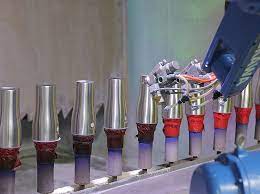Business process automation (BPA) refers to the use of technology to streamline and automate routine business tasks and processes. By eliminating manual and time-consuming activities, BPA helps to improve efficiency, reduce errors, and increase productivity.
In today’s fast-paced and competitive business environment, organizations are constantly looking for ways to optimize their operations and stay ahead of the curve. BPA offers a powerful solution to achieve these goals.
Streamlining and Standardizing Processes
One of the key benefits of business process automation is the ability to streamline and standardize processes. By automating repetitive and mundane tasks, employees can focus on more strategic and value-added activities.
For example, instead of manually inputting data into multiple systems, BPA can integrate different software applications and transfer data seamlessly. This not only saves time but also reduces the risk of errors and inconsistencies.
Reducing Errors and Improving Accuracy
Manual data entry and other repetitive tasks are prone to errors. Even the most diligent employees can make mistakes, especially when they are tired or under pressure.
These errors can lead to costly consequences, such as financial losses, compliance issues, or customer dissatisfaction. Business process automation can significantly reduce the risk of errors by eliminating manual intervention.
Increasing Productivity and Efficiency
Business process automation can have a significant impact on productivity and efficiency. By automating repetitive tasks, employees can focus on more strategic and value-added activities, such as innovation, collaboration, and customer engagement. This not only improves employee satisfaction but also drives business growth.
Enhancing Decision-Making and Agility
Business process automation provides organizations with real-time visibility into their operations. By capturing and analyzing data in real time, organizations can make informed decisions and respond quickly to changing market conditions.
For example, BPA can provide real-time dashboards and reports that highlight key performance indicators (KPIs) and trends. This enables managers to identify bottlenecks, optimize processes, and make data-driven decisions.
Ensuring Compliance and Risk Management
Compliance with regulations and risk management are critical for organizations across different industries. Failure to comply with regulations can result in fines, reputational damage, or even legal action. Business process automation can help organizations ensure compliance and manage risks effectively.
Features of Business Process Automation in Improving Efficiency and Productivity
Business Process Automation (BPA) involves using technology to streamline and automate routine and manual business processes. Implementing BPA can significantly improve efficiency and productivity in various ways. Here are some key features of BPA and how they contribute to enhancing business performance:
Workflow Automation:
- BPA enables the automation of repetitive and rule-based tasks, reducing the need for manual intervention.
- Workflow automation ensures that tasks are completed in a predefined sequence, eliminating delays and reducing the risk of errors.
Task Management:
- BPA tools provide efficient task assignment and tracking mechanisms, ensuring that each team member is aware of their responsibilities.
- Tasks can be prioritized, scheduled, and monitored, leading to better time management and increased productivity.
Data Integration:
- BPA allows for seamless integration with existing systems and databases, ensuring that data flows smoothly between different processes.
- By reducing manual data entry and minimizing data silos, organizations can make more informed decisions based on real-time, accurate information.
Document Management:
BPA helps in the automation of document creation, storage, retrieval, and approval processes.
Improved document management reduces the risk of errors, enhances collaboration, and accelerates decision-making processes.
Notification and Alerts:
- BPA systems can generate notifications and alerts to inform stakeholders about the status of tasks, deadlines, or potential issues.
- This feature ensures that relevant parties are kept informed in a timely manner, enabling proactive decision-making.
Business Rules and Logic:
- BPA allows organizations to define and implement business rules and logic, ensuring consistent and standardized processes.
- Automation based on predefined rules reduces ambiguity, enhances accuracy, and ensures compliance with regulatory requirements.
Resource Optimization:
- BPA helps in optimizing resource allocation by automating resource-intensive tasks.
- Human resources can be redirected to more strategic and value-added activities, maximizing overall productivity.
Analytics and Reporting:
- BPA systems often come with built-in analytics and reporting tools that provide insights into process performance.
- Organizations can use these tools to identify bottlenecks, track key performance indicators, and continuously improve processes.
Scalability and Flexibility:
- BPA solutions are designed to scale with the growing needs of the business.
- They offer flexibility in adapting to changing business requirements, allowing organizations to remain agile in dynamic environments.
Conclusion
Business process automation plays a critical role in improving efficiency and productivity. By streamlining and standardizing processes, reducing errors, increasing productivity, enhancing decision-making, and ensuring compliance, organizations can achieve significant benefits.
However, it is important to note that BPA is not a one-size-fits-all solution. Organizations need to carefully analyze their processes, identify automation opportunities, and select the right technology solutions.
Furthermore, successful implementation requires strong change management and employee engagement to ensure smooth adoption and maximize the benefits of automation.



